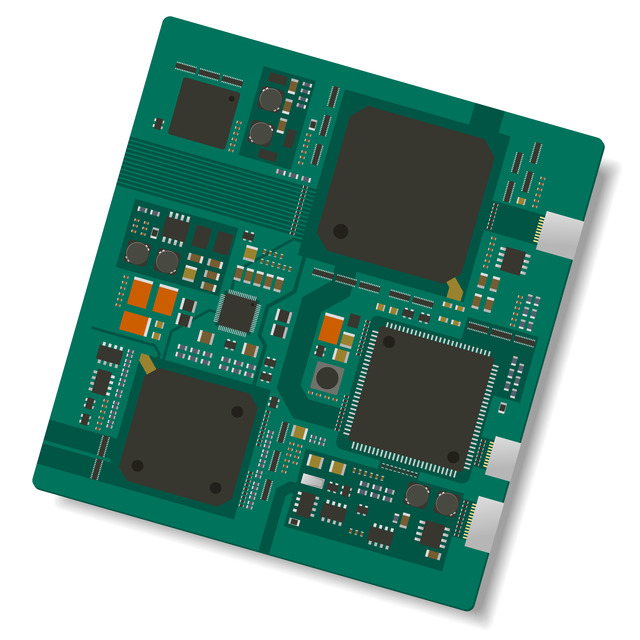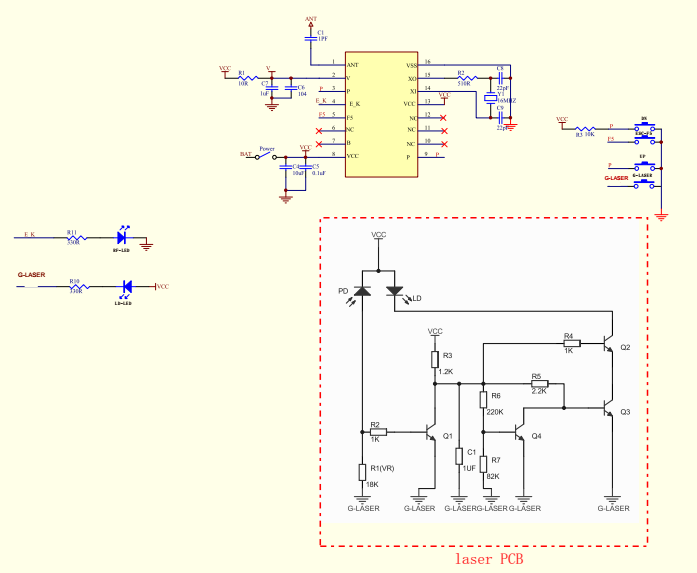Five fundamentals for modifying modules to certify radio laws
Hello. It is a hori of the manager.
Please note that this content is quite professional, and frankly, it may not be very helpful unless you are in charge of it.
By the way, it may be difficult to imagine what kind of mechanism it is even if it is said in a word of radio law certification, if you are not a person who is professionally involved, such as engineers.
For example, products that emit radios such as Wi-Fi and Bluetooth are equipped with a wireless chip and peripheral circuits that implement it, and the radio wave contents are inspected to see if they conform to the standards of Japanese radio law.
On the other hand, in addition to wireless chips and peripheral circuits, there is a wireless module that also comes with software necessary for communication.
Some products implement this radio module.
However, to put it a little more specifically, this wireless module itself can be certified to the Radio Act, and if the built-in wireless module is certified, radio law authentication (notification) in the final product is often unnecessary.
And since electronics manufacturers are generally releasing certified wireless modules, they can significantly reduce the process compared to designs that procure wireless chips and the like on their own, so there is an increasing number of examples of product design using certified wireless modules.

In that case, the radio law label will be displayed directly on the module.
So, even though it is a wireless product, there are some products that do not have radio law labels, but when you disassemble the product, it is displayed on the module.
From the perspective of people developing products, it is very convenient to use such modules because radio law authentication is unnecessary.
Of course, there are many wireless modules that do not have radio law certification, and be aware that wireless modules do not necessarily authenticate radio laws.
Apart from whether or not there is radio law certification, the designer decides whether to use a wireless chip or a wireless module from various angles such as product size, function, and cost.
On the other hand, there are increasing consultations such as whether the module that appealed for radio law certification is really certified, and whether the module that appealed for radio law certification, and wanting to use the product itself but changing only the module for various circumstances is increasing.
However, especially in the latter, in general, it may seem that there is no problem separately because it just changes the module, but there are many things that are not quite so in the world of machines.
This time, I will write about such cases based on our case studies.
As a premise, (1) existing use a module certified by the Radio Act→ changed to a module that did not authenticate the Radio Act, (2) The module has not been certified by the Radio Act both before and after the change,
It has become an article of the content.
Contents
- 1 If you change the module, it's not over
- 2 What happens when you change modules?
- 3 If I bring my current product and new modules to the inspection agency, will it inspect it as it is?
- 4 Why change only modules in the first place?
- 5 How to choose an inspection institution when inspecting
- 6 The advantage of the knowledge that modules (inside the product) can be changed
If you change the module, it's not over
There are many consultations of this kind, but when a company or president with considerable technical skills contacted himself, it can be understood that it is a laborious job to some extent.
On the other hand, even the person in charge who is calling himself a technical company may seem to know the size of the work, and there is a slight doubt when contacting "Because it is only a change (of the module), radio law authentication can be done with a simple additional inspection?"
Basically, you should be doing the same thing, but you may be worried that our perception will be different, but if you change the module, it will not end as it is if you write it in the sense of declaring.
By changing the module, it is necessary to remake the product specification from the beginning, even if there is a previous base, that is, authentication is also new. It is.
While the appearance is quite the same, the contents are renewed. However, changing modules does not necessarily improve performance, so the nuances are different from the version upgrade.
To be precise, it is a problem on the production side that is basically not related to the end user, although it is a feeling that changing the parts used will change the rights relationship with the product parts.
What happens when you change modules?
This is a schematic of a wireless presenter who has been certified by us, which I introduced in a previous article. Please refer to it as an image of the schematic.


The point is that if you change one part in the schematic, you have to redesign everything from the beginning. The product does not operate as it is by changing it in one place.
There are exceptions, but basically, product specifications are originals made for each part and part.
As I mentioned earlier, engineers who understand this are quick to talk about, but if you do not understand, you want to check with the inspection agency for the time being and give an estimate.
So what does it actually take to change modules and authenticate radio laws?
It may vary depending on the product content, so please refer to it as an example.
(1) Work of module change itself
(2) Change of antenna (device for radiating and converting radio waves (electromagnetic waves) in space)
(3) Creation of PCB pattern diagrams
(4) Creation of schematics
(5) Creation of BOM (parts) table
(6) Product adjustment at each stage for operation (mounting)
Even if I roughly mention it, this much work will occur.
It is a work that is dazzling from the perspective of people outside the field of expertise, but in order to produce wireless products in the first place, this much work and materials are necessary, and if a solid engineer does it, it is a relatively simple story.
However, it is a little difficult in a company that only assembles, and if you can not plan and design from the beginning, the work itself may be difficult.
In addition, if you use a module certified by the Radio Law even if it is new, radio law authentication is unnecessary, but operation tests for mounting are necessary.
In addition, it takes time to find a new module that can follow the previous functions as it is, and if it is up to radio law authentication, it will be a great effort (human cost) to look for.
If so, there is no option to search for a module that satisfies the function side and perform radio law certification with the product itself.
If I bring my current product and new modules to the inspection agency, will it inspect it as it is?
Of course, it will not be inspected as it is, but once you write it, while preparing the above documents, you need to change the module and implement it, test the operation, and apply to the inspection organization.
If both are missing, you will not even be tested.
Why change only modules in the first place?
This is a business-conscious part. It is an example of collecting various information, but please refer to it.
(1) The module manufacturer has discontinued production of the module.
If there is a wireless product called A, the product manufacturer manufactures all parts in-house, and does not do everything until assembly by its own.
Of course, we may produce parts in-house, but it is common to use parts from specialized manufacturers for the necessary parts.
In particular, specialized parts such as modules are specialized manufacturers, and there are many cases where radio law certification has been completed. In addition, there are parts manufacturers not only in Japan but also all over the world, so product manufacturers are free to choose modules that are more suitable for their products.
On the other hand, there is a good story that a parts manufacturer suddenly stops producing the module.
If the product manufacturer also orders a large amount of products, it may be possible to negotiate continuous production, but if it is small, it is a reasonable decision to completely discontinue production because the parts manufacturer also has no merit of making a module specifically only for the company.
As a product manufacturer, you still want to continue production, but you will no longer have access to existing modules, so you will need to use the new modules.
(2) I want to unify all products with our own products (parts)
For example, when a major company purchases a patent for a product sold overseas and sells it as its own product, there is a case where you want to unify the internal parts used with your own products.
Since all technical materials are available, the modules will be changed to the parts desired by the major companies, and the necessary parts themselves will be changed.
We may make changes in-house, or we may ask a agency like ours.
By the way, we can undertake the series of tasks described above due to changes to modules.
There are other reasons, but the representative contents seem to be the above two points.
How to choose an inspection institution when inspecting
If it is an inspection body that has been previously certified, it will accept it as an additional authentication, so there are customers who want to authenticate in the same place, but when the module is changed, it is basically judged to be a new authentication.
Of course, if the previous certification body is the best, there is no problem there, but if you look for it, there are better conditions, so I think that it would be good to work on it flexibly.
We can select the optimum inspection organization by taking into consideration the production area of the factory.
The advantage of the knowledge that modules (inside the product) can be changed
I wrote such a rather specialized thing this time because I thought that if you know that you can change the module and authenticate the radio law again as knowledge, it will be a business idea in some case.
For example, as I wrote in "Reasons for Changing Modules", there may be circumstances such as wanting to continue selling products but not only existing modules, or wanting to change modules when introducing new products.
If you don't panic about what to do at that time and know that you can simply change the modules and do the necessary work, you will be able to do business more smoothly in the future.

